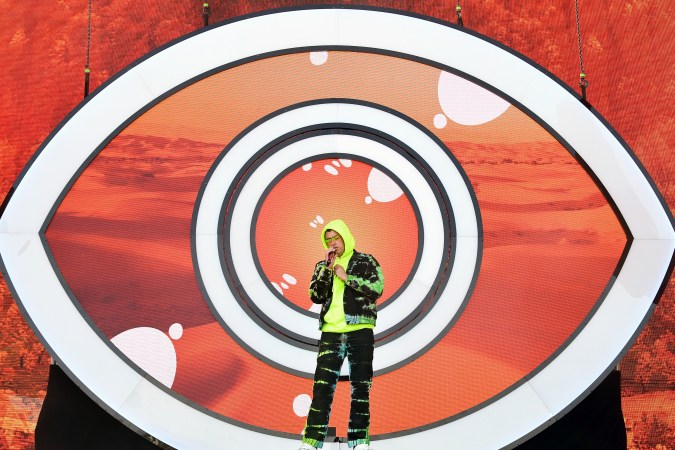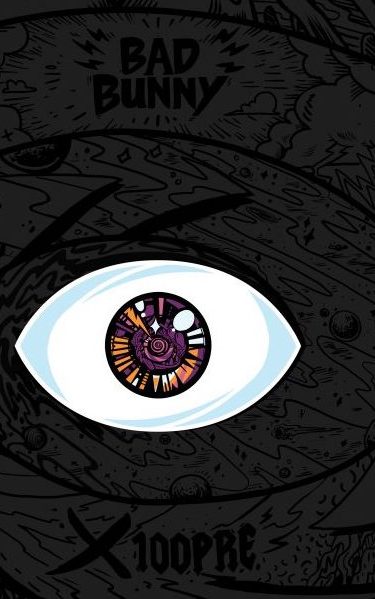“Les traje un flow nuevo pa’ que le den copy,” Bad Bunny sings on “Estamos Arriba.” Perhaps the least memorable track in his discography, the bars-laden song includes one of his most beaconing lines. It’s a statement which will surely ring true for the next decade; yet only a few, if any, in urbano seem to have taken note thus far. Bad Bunny, though inimitable, showed this generation of artists that there’s a wealth of possibility beyond the already pop-alerting blueprint the forefathers of reggaeton left us and, furthermore, within the increasingly malleable urbano genre. On X100PRE, Benito proved to be an archetype of what happens when an artist creates from a place of freedom. His sweet balance of brazen assurance and nostalgic vulnerability coupled with producer Tainy’s deftness for capturing an artist’s essence and pushing the genre forward, produced one of the best albums of the decade. Yet, despite wide critical acclaim and industry praise, few artists seem to have cultivated that energy.. A year later, there’s still much to learn from it.
True to its reggaeton and urbano foundation, X100PRE is rampant with braggadocio, including tales of threesomes, cash flow and perreo. Pero, Bad Bunny’s debut album also touches on domestic violence, gender nonconformity and the depression that often comes with losing oneself on the rise. That personal fragility married with masterful musicality produce a singular sound that should have signaled to the urbano world that risks are worth taking.
X100PRE trades the safe, reggae-tinged, ubiquitous autotune common in the urbano world with trapchata bangers, synth pop introspection and emo perreo. In this genre-defying way, the album surpassed the expected stream-thirsty projects so commonplace in the music industry.

With references to MySpace and Shakira, along with the inclusion of ‘90s pop-punk and trap ballads, the album often feels like the 25-year-old’s teenage dream brought to life. It is for him and largely about him – the fact that millions related, keeping him at the coveted No.1 spot for weeks and filling stadiums to this day – is merely an added bonus. Plus, this isn’t a singular experience. Both the Latin and Anglo markets are rife with examples of personal genre outliers like Ariana Grande’s “thank u, next,” Cultura Profética’s Sobrevolando and Helado Negro’s This Is How You Smile. In the streaming economy, it’s important to note the benefit of quality over quantity. More often than not, it’s what separates the icons from the nenxs.

A year came and went, and Bad Bunny has yet to release a sophomore album. I say that not with a judgmental or impatient tone. It’s simply a fact worth noting. “The day that I make an album it’ll be to demonstrate who I am, and what I can do… It’ll be so that people know who Bad Bunny is” he told Complex in 2018. “And, with that, they’ll know who Benito is.” Rush not, regret not.
“Estamos Arriba” was the first of a slew of collabs Bad Bunny released in 2019 – all of which prove the Puerto Rican icon is committed to the longevity of urbano, and generous enough to extend branches to those riding the wave below. His next few songs included a trap anthem with Eladio Carrion, and an underground adjacent banger with Omy de Oro and Shooter Ledo, a security guard turned promising talent. Plus, there was of course Oasis, his joint project with J Balvin, as well as the dreamy “Callaita,” which tops our songs of the year list, and his befitting breakup collection track, “Vete.” It’s been a chill, yet all but static year.
On Monday, the Vega Baja-native released what he said is the final video to accompany X100PRE. In it, he features wrestling icon Stone Cold Steve Austin. With that, Benito closed off the year with one final underlying takeaway: having fun with it is a key part of the process. Bad Bunny showed, once again, that everything anyone needs to create unique work (hopefully) is already in them. Yes, that includes perfectly placed references and samples (exhibit A: the Plan B sample and reference to Daddy Yankee’s “Donde Hubo Fuego” on “Cuando Perriabas”), or pairing childhood, pop-shifting mellifluous voices like that of Ricky Martin with your own should you have the opportunity (aka “Caro”) – but, more than that, it’s about having your unique DNA and weird inklings shamelessly bleed through. When Benito said dale copy, he meant that… yet everything but.

A lot (yet somehow nothing at all) has changed in the last year. Since Bad Bunny released X100PRE on Nochebuena of 2018, he’s dropped eight solo videos, released a handful of songs and gifted us with “La Canción” among others. In the meantime, somehow tracks like “La Romana” live in the same orbit as insipid offerings like Nacho and Greeicy’s “Destino” or Lele Pons’ “Bloqueo.” The year has garnered more eyes and ears for the evolving genre, so why does it feel like its bubble is in danger of bursting?
Urbano is increasingly (and all-too-wittingly) delving at light speed towards homogeneity. And while the indiscernible posse collabs, autotune and uninspired production continue to deliver favorable streaming results, there seems to be no sense of urgency to save the genre from impending doom.
Bad Bunny and more specifically X100PRE was – and still is – the fearless exception. It proved that artistry and experimentation can be rewarded. Now the question is, will anyone follow suit?





